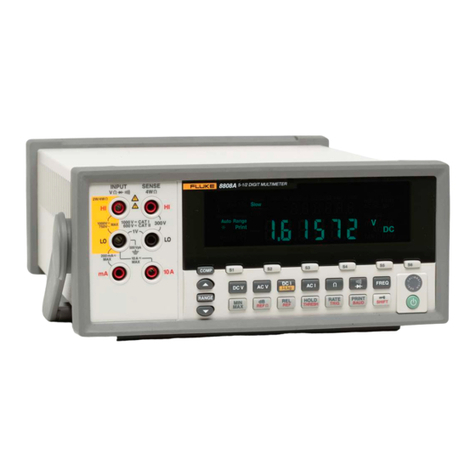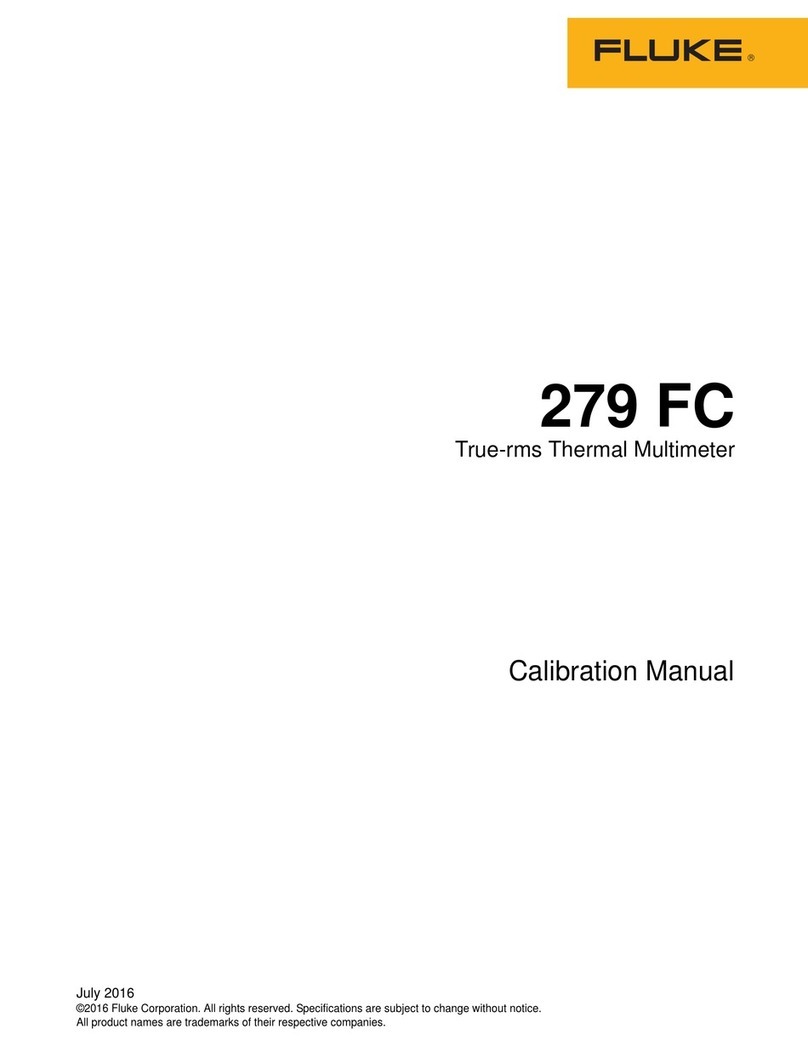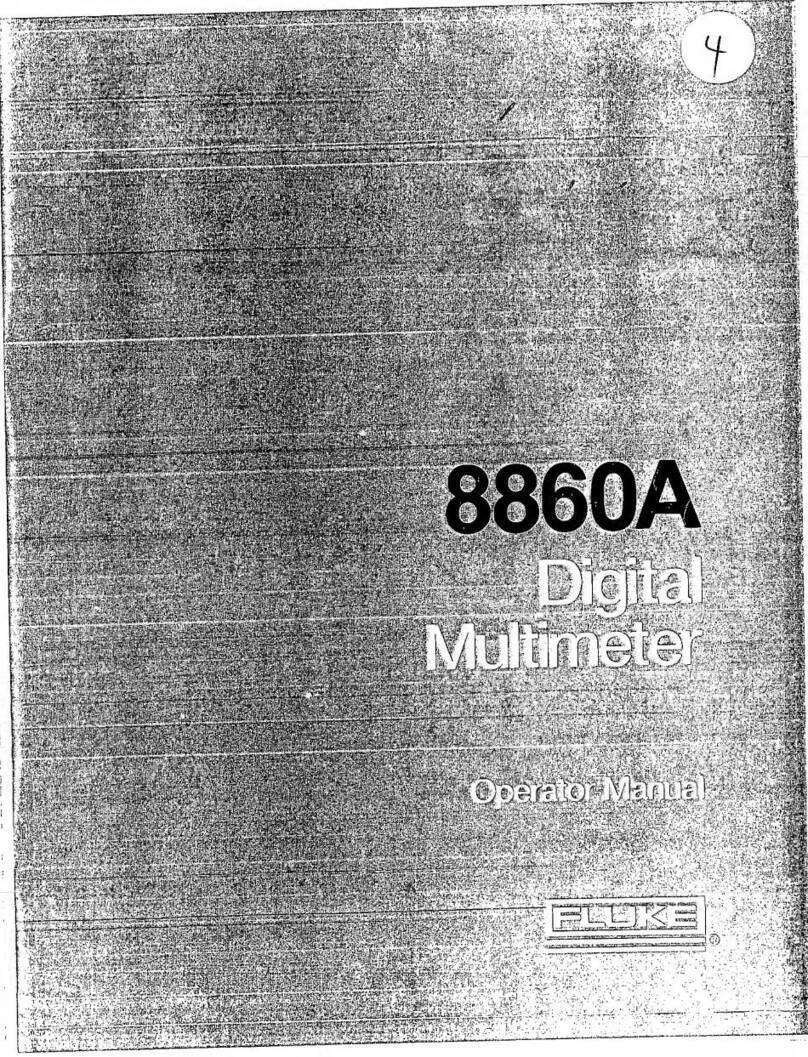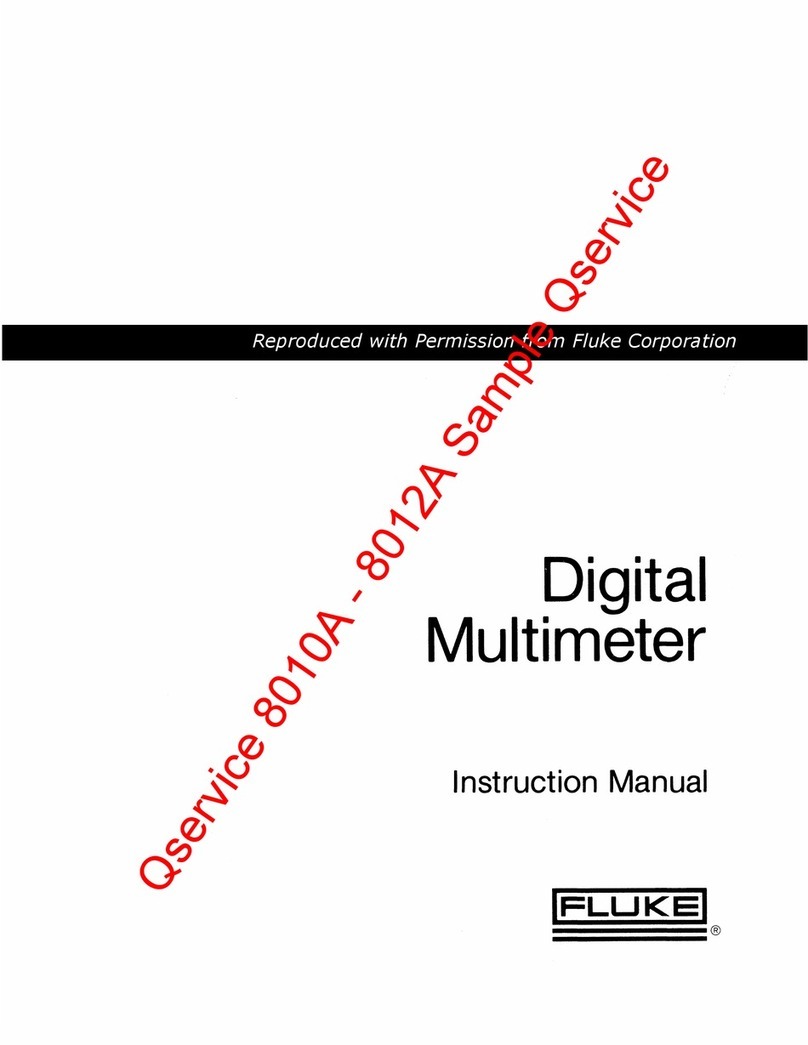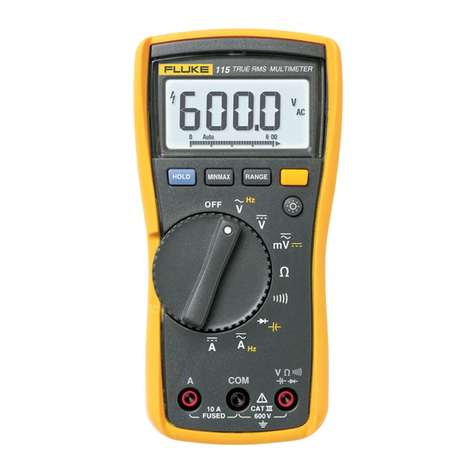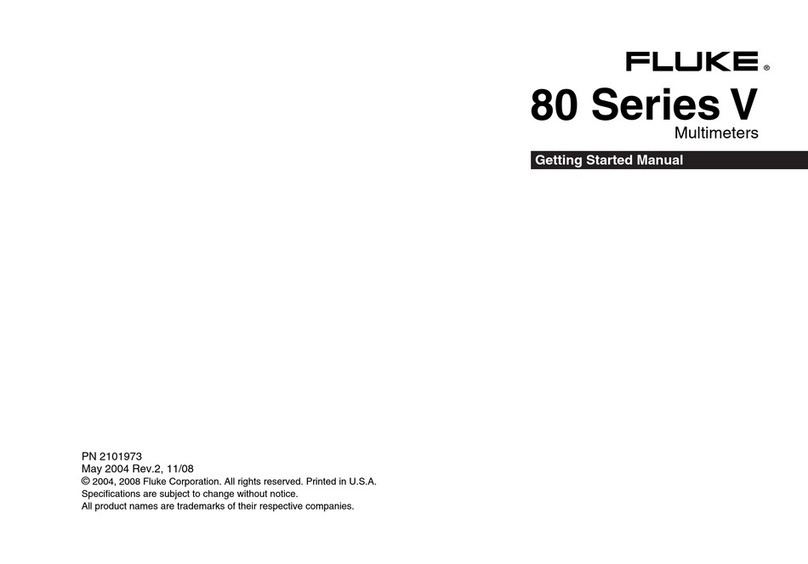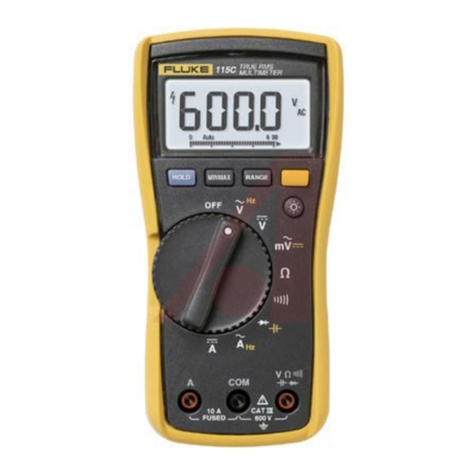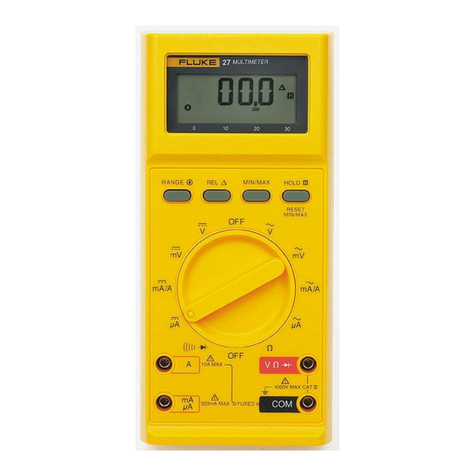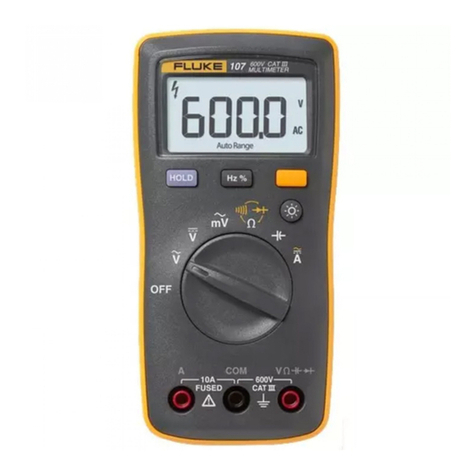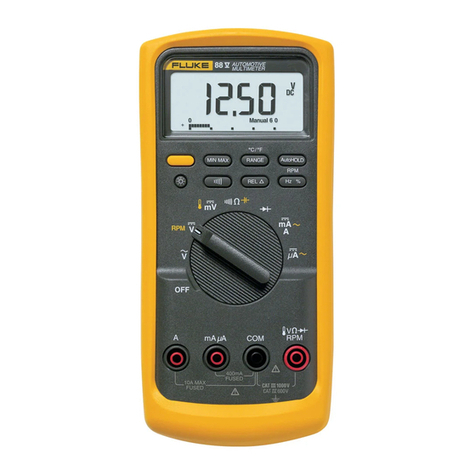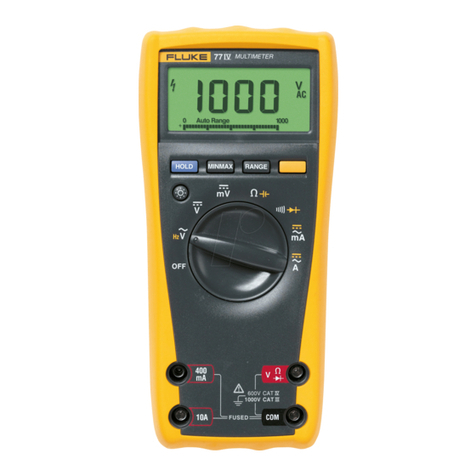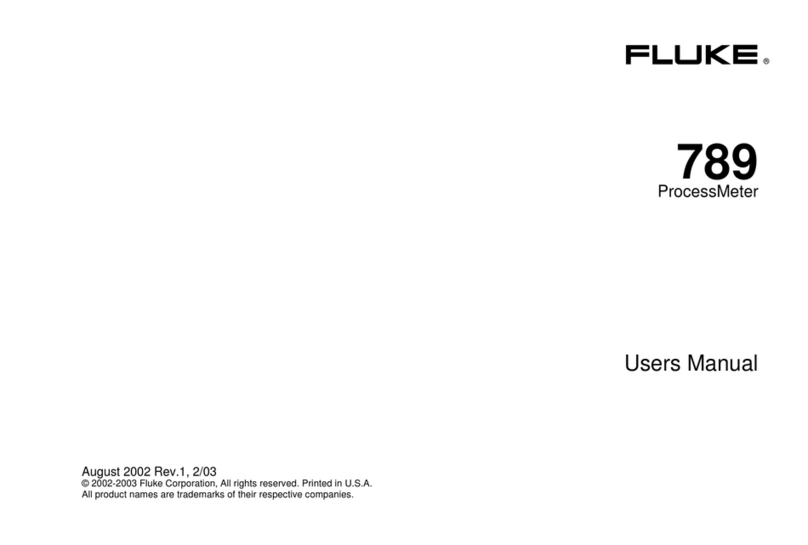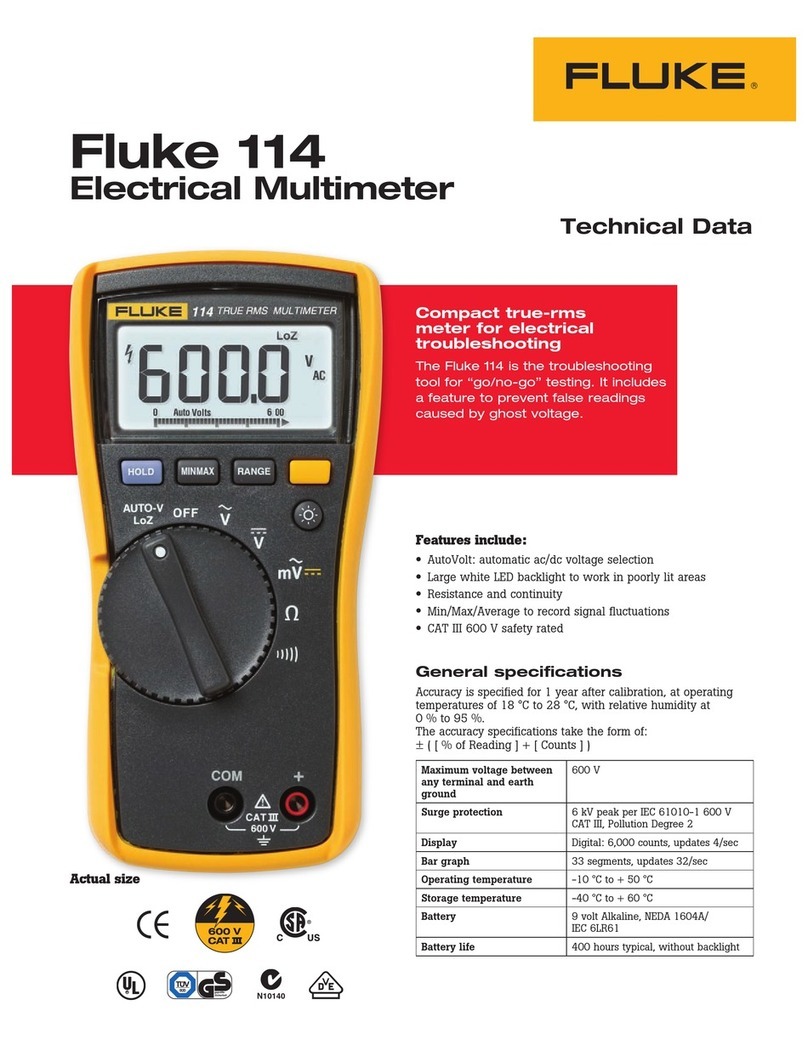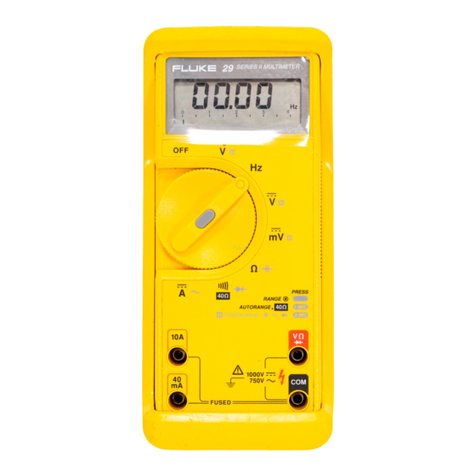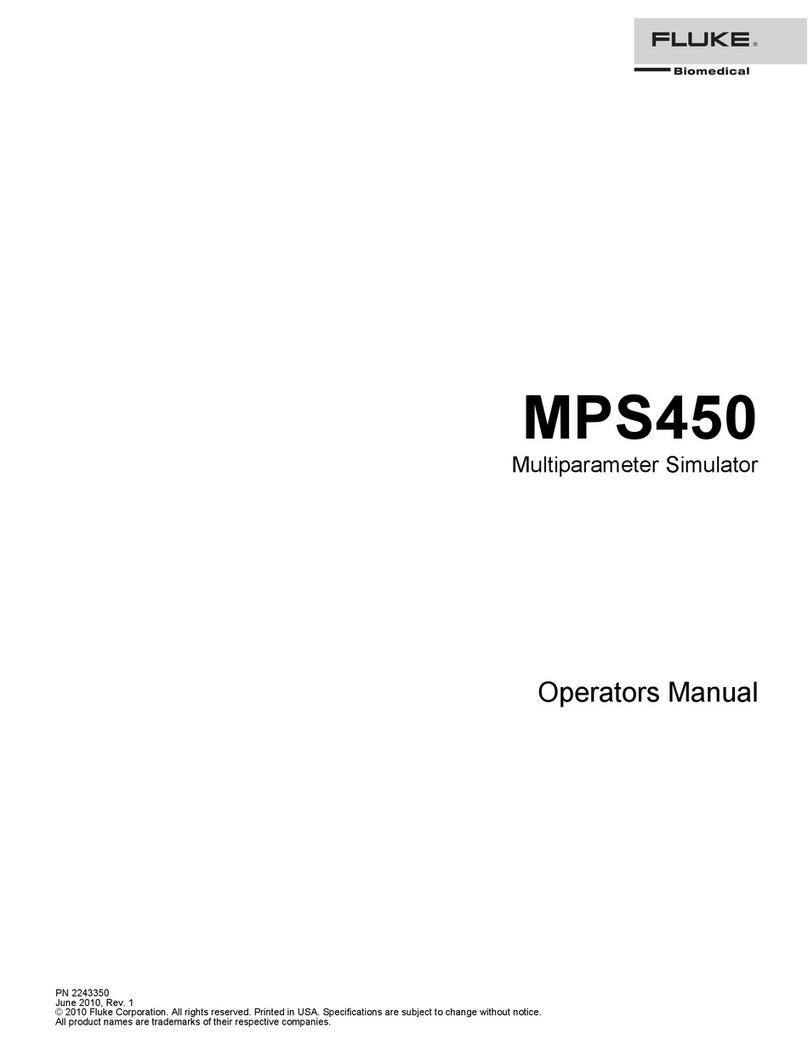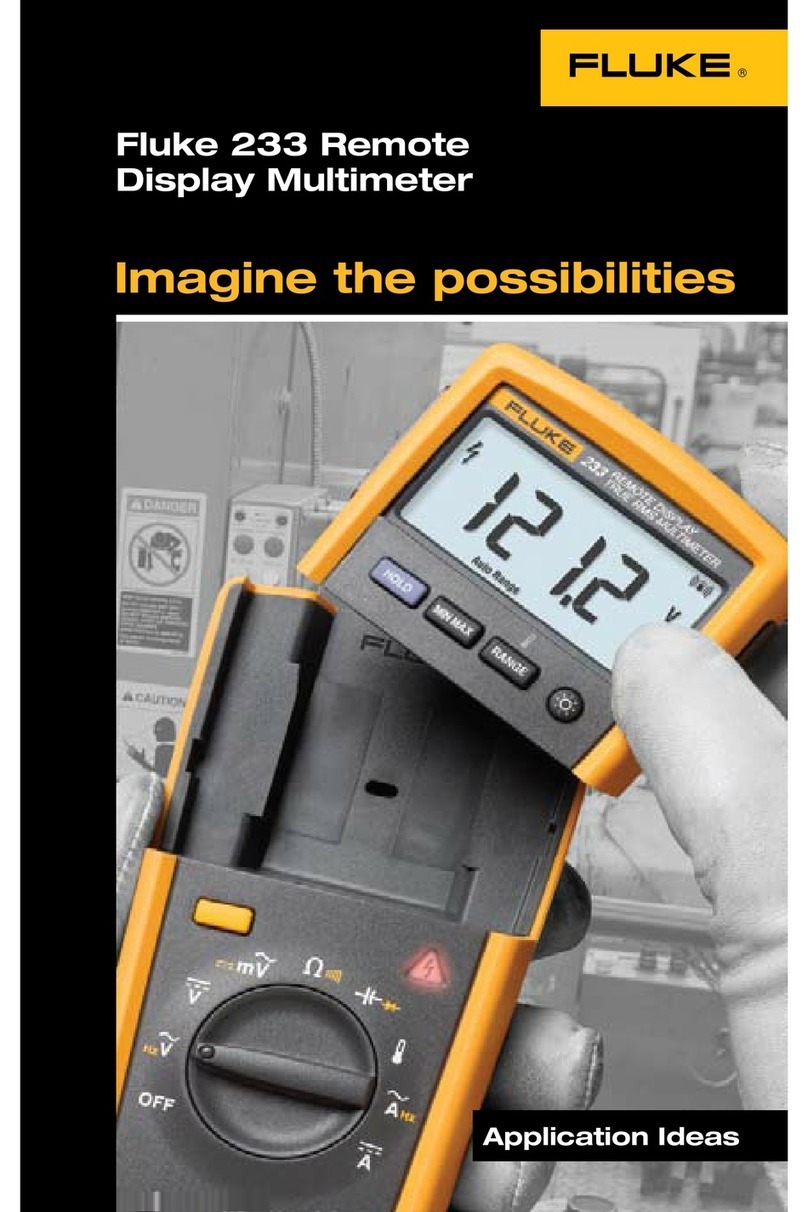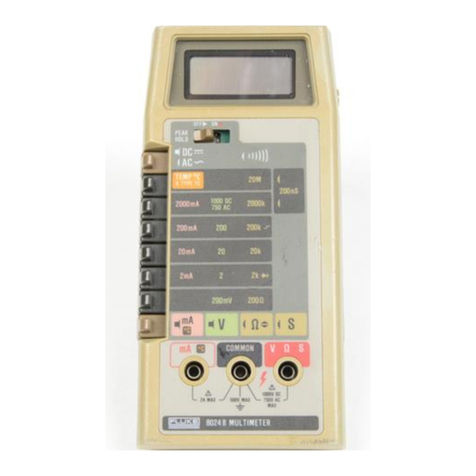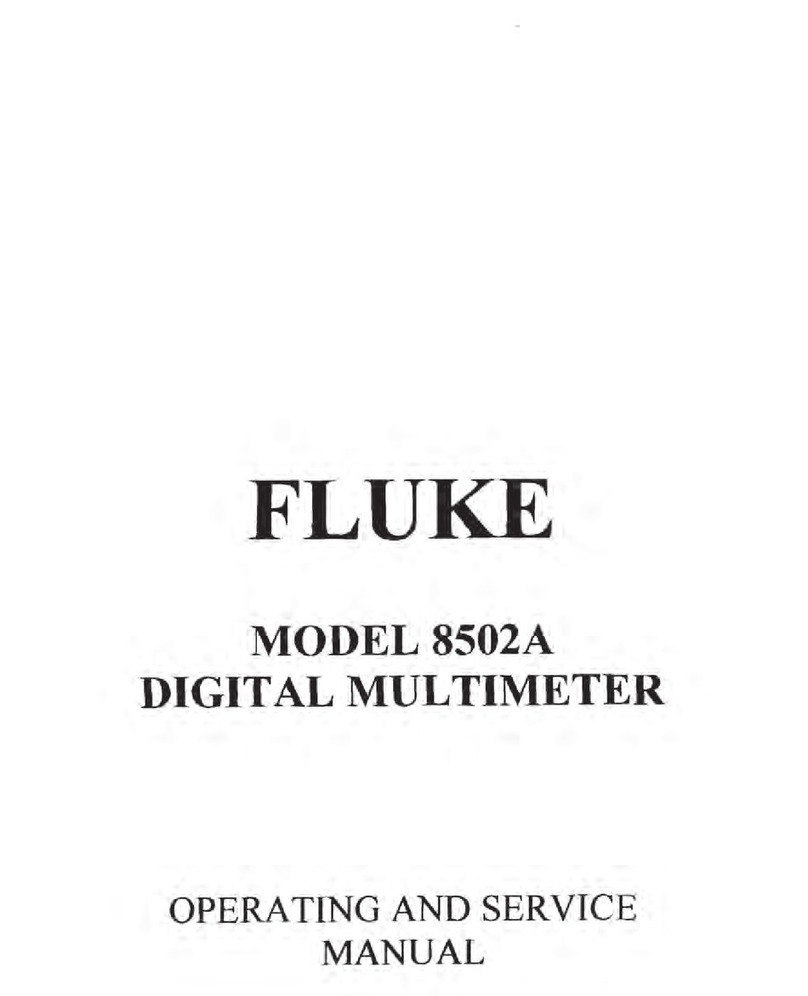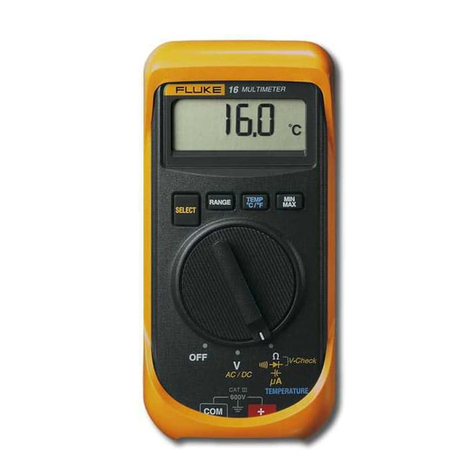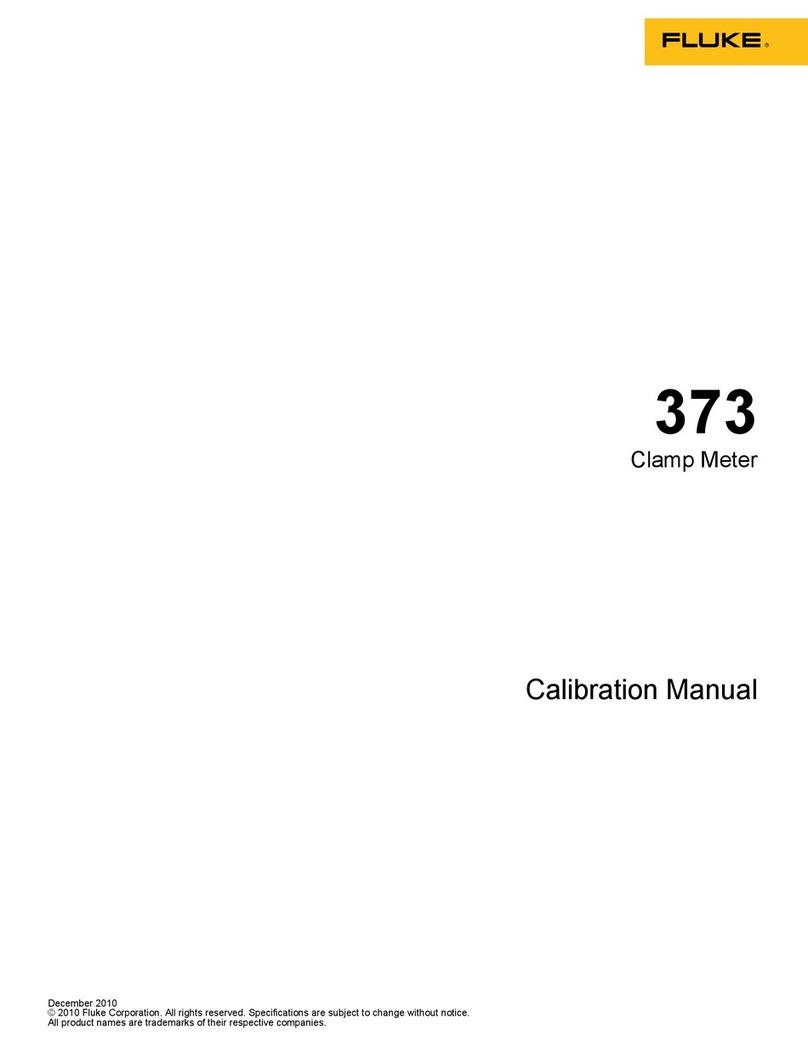
787
Users Manual
2
•Singapore: +65-6799-5566
•Anywhere in the world: +1-425-446-5500
Or, visit Fluke's website at www.fluke.com.
To register your product, visit http://register.fluke.com.
To view, print, or download the latest manual supplement,
visit http://us.fluke.com/usen/support/manuals.
Safety Information
The symbols used on the Product and in this manual are
shown in Table 1.
A Warning identifies conditions and procedures that are
dangerous to the user. A Caution identifies conditions and
procedures that can cause damage to the Product or the
equipment under test.
Warning
To prevent possible electrical shock, fire, or
personal injury:
•Read “Safety Information” before using
the Product.
•Do not use the Meter if it is damaged.
Before you use the Meter, inspect the
case. Look for cracks or missing plastic.
Pay particular attention to the insulation
surrounding the connectors.
•Make sure the battery door is closed and
latched before operating the Meter.
•Remove test leads from the Meter before
opening the battery door.
•Inspect the test leads for damaged
insulation or exposed metal. Check test
lead continuity. Replace damaged test
leads before you use the Meter.
•Measure a known voltage first to make
sure that the Meter operates correctly. If
you are unsure, have the Meter examined.
•Do not operate the Meter around
explosive gas, vapor, or dust. Do not use
in a damp or wet environment.
•Use only a single 9 V battery, properly
installed in the meter case, to power the
Meter.
•When servicing the Meter, use only
specified replacement parts.






